inprogress which means I consider it largely incomplete in it's current state. Expect rough, unfinished thoughts.Screenshot essay containing a collection of visual symbolism, leitmotifs, and other thematic and non-verbal design choices I noticed in the movie Liz to Aoi Tori while watching through it.
Sound
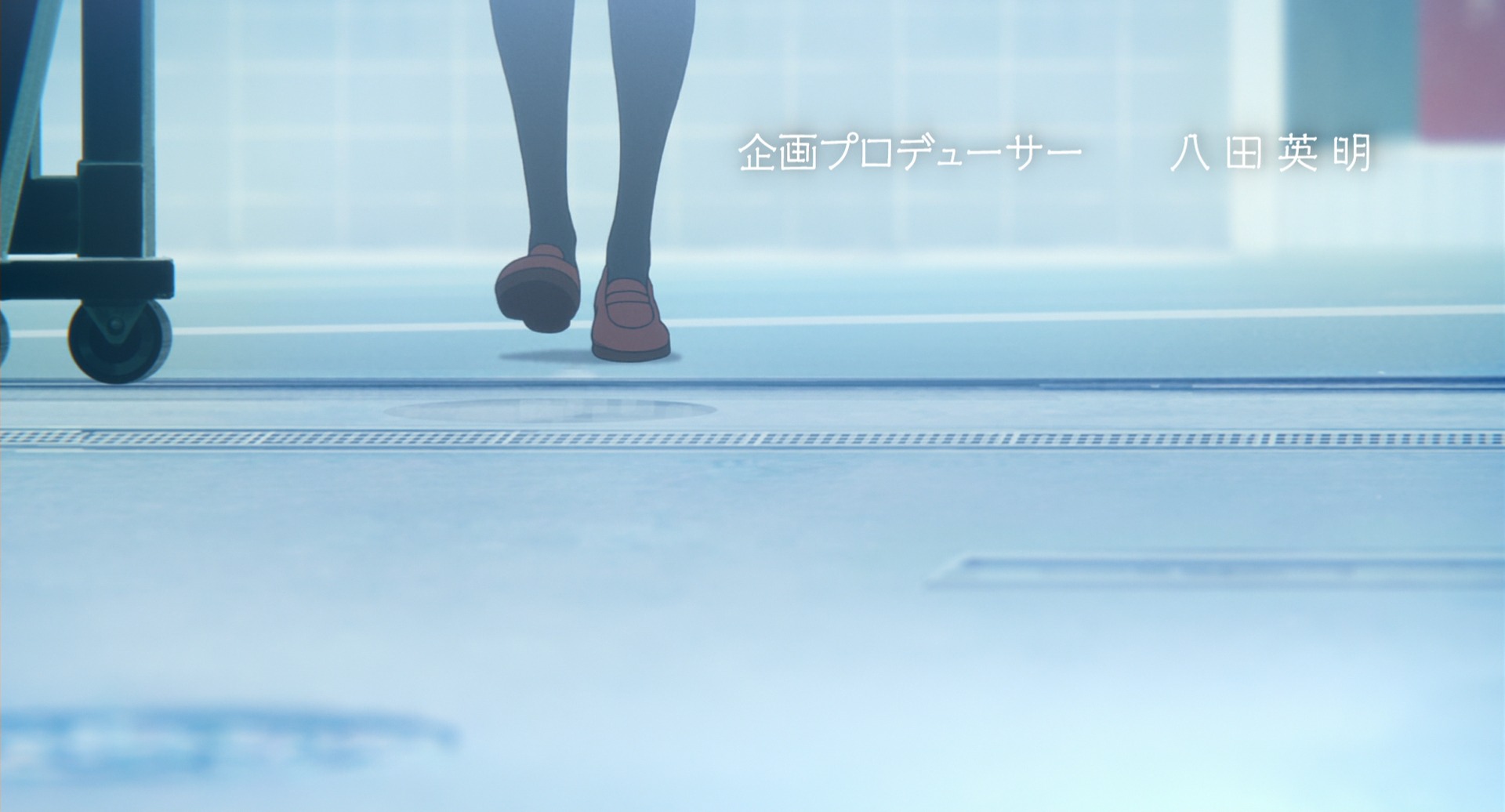
Throughout many scenes in the movie, the steps of the girls are accompanied by a satisfying tap sound (which Yamada the director said was sampled from actual real life sounds). These steps are aligned to the BPM of the underlying track. If you know anything about animation, you probably already understand how hard this is. Following a rigid structure while keeping the characters movements still feeling natural is not a trivial task, and I imagine painstaking work went into crafting this element of the film.
In interviews, Ushio (the composer) pointed out that the BPM at various points were not random and intentionally set. In the opening scene, Nozomi walks at 110 and Mizore at 601. This creates somewhat of an out-of-sync 11/6 polyrhythm (see Chopin’s Nocturne Op. 9 No. 1 for an example of such a polyrhythm in actual music). Nozomi’s step is not in line with the music the majority of the time, whereas Mizore’s are. This foreshadows Mizore’s musical skills and potential.
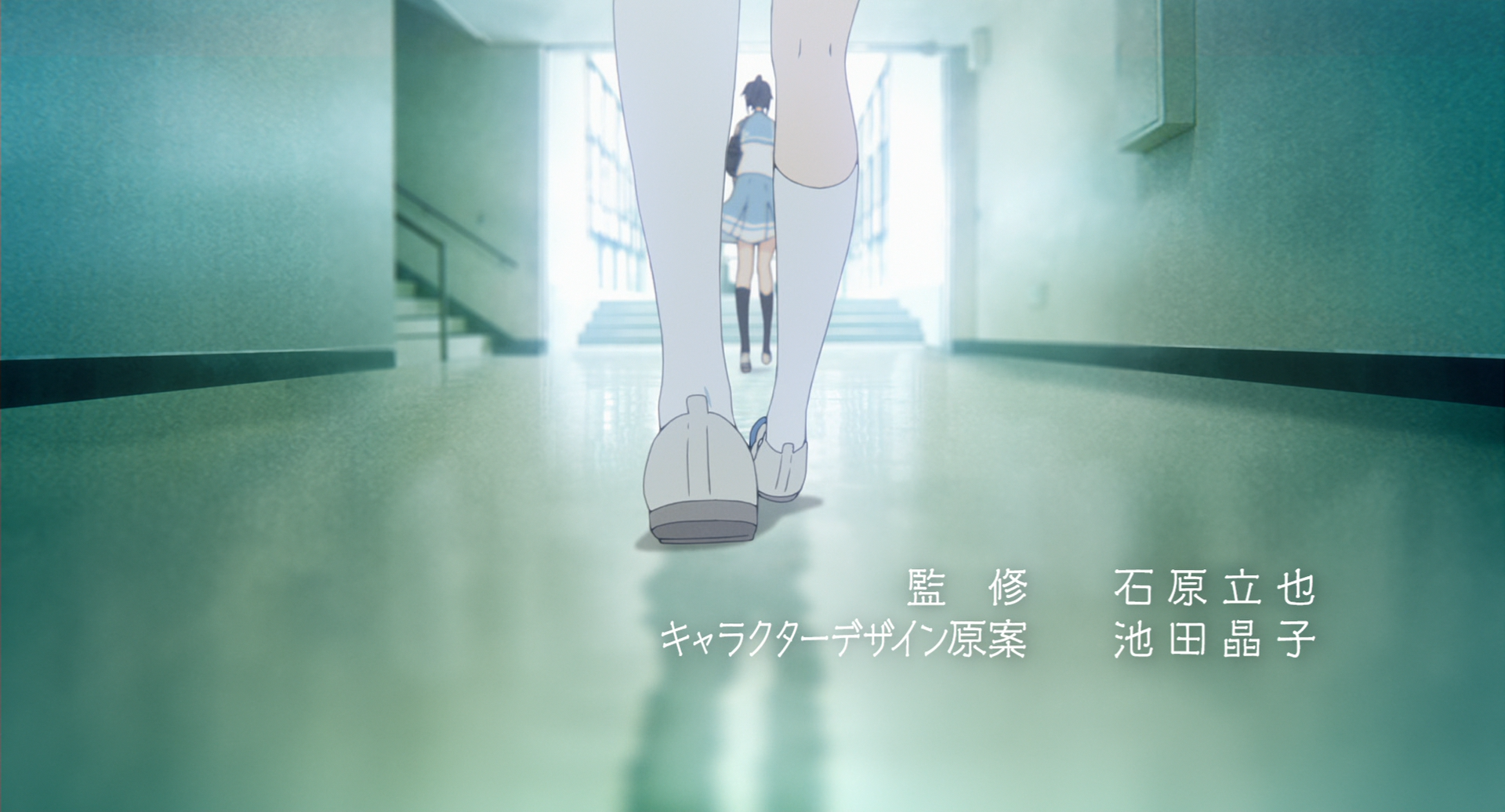
As a side note, something else fairly noticeable is the distinction of black and white between Nozomi and Mizore’s stockings which persist throughout the movie. Most likely this represents their disjointedness, and I might be stretching it here, but maybe it is even reflective of the colours and qualities of the other’s instruments (oboes are typically black and flutes are typically silver).
Space
 | 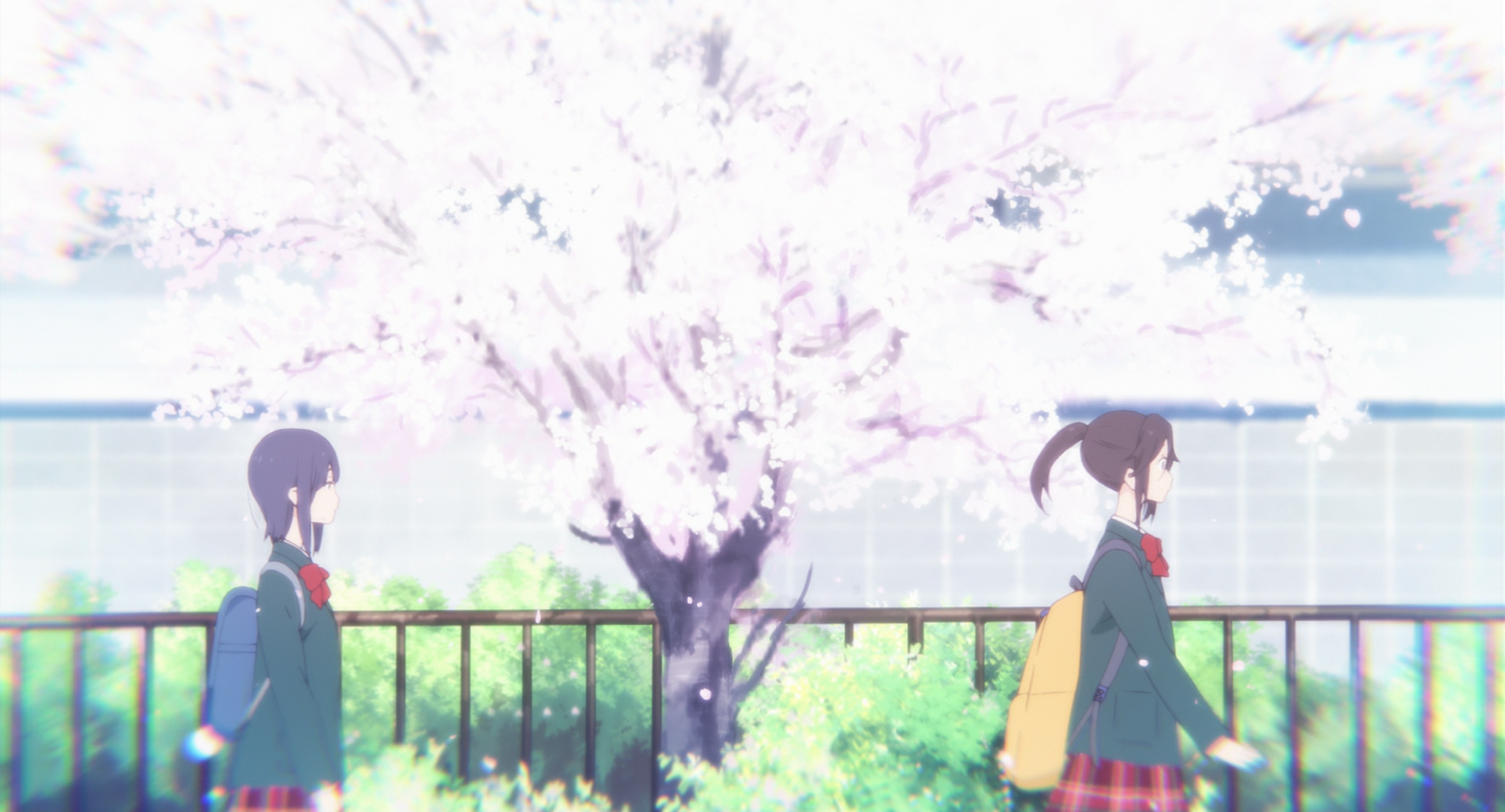 |
At the beginning, they are shown to be walking separated from each other, another way of emphasizing the theme of joint vs disjoint.
And thus, it should come as no surprise that at the end of the movie we see the distance is closed:

Do you notice that the surroundings in above image is similar to the top right image of the cherry blossoms? However, in the top right image, the tree separates them, in the bottom it doesn’t. To emphasize the contrast, the season is also shown to be different.
Also, I liked the added touch of them walking in the opposing direction compared to the initial images to further allude the change.
Red
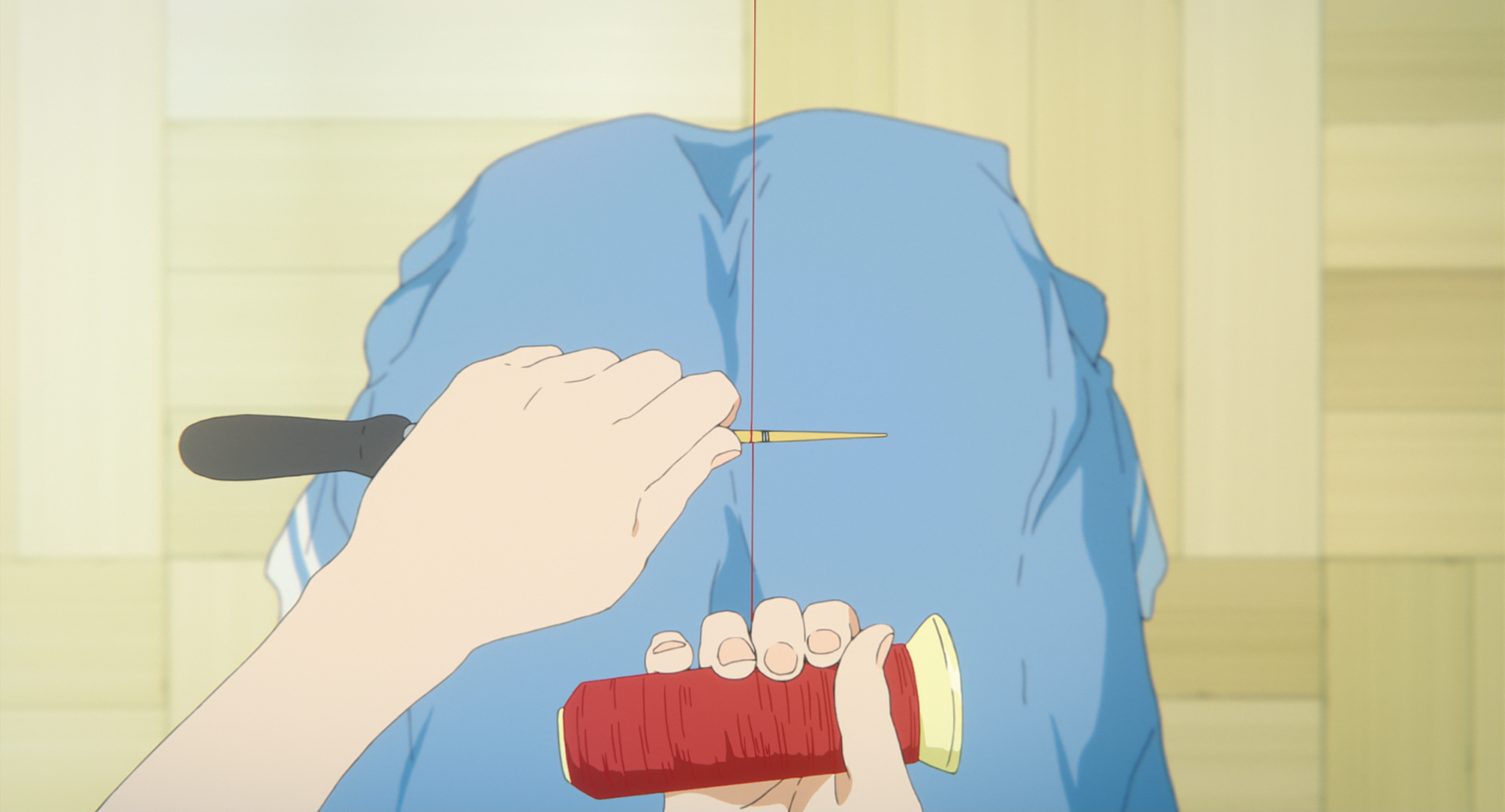
The string Nozomi uses for her oboe reeds immediately catches your eye. In a film with largely cool blue, unsaturated hues, a sudden poppy colour like deep red is hard to miss. The film cuts to this string many times across multiple scenes. Explicit care is even taken to show Mizore tensing her grip over the string spool when Yuuko asks whether she is applying to music school only because of Nozomi:
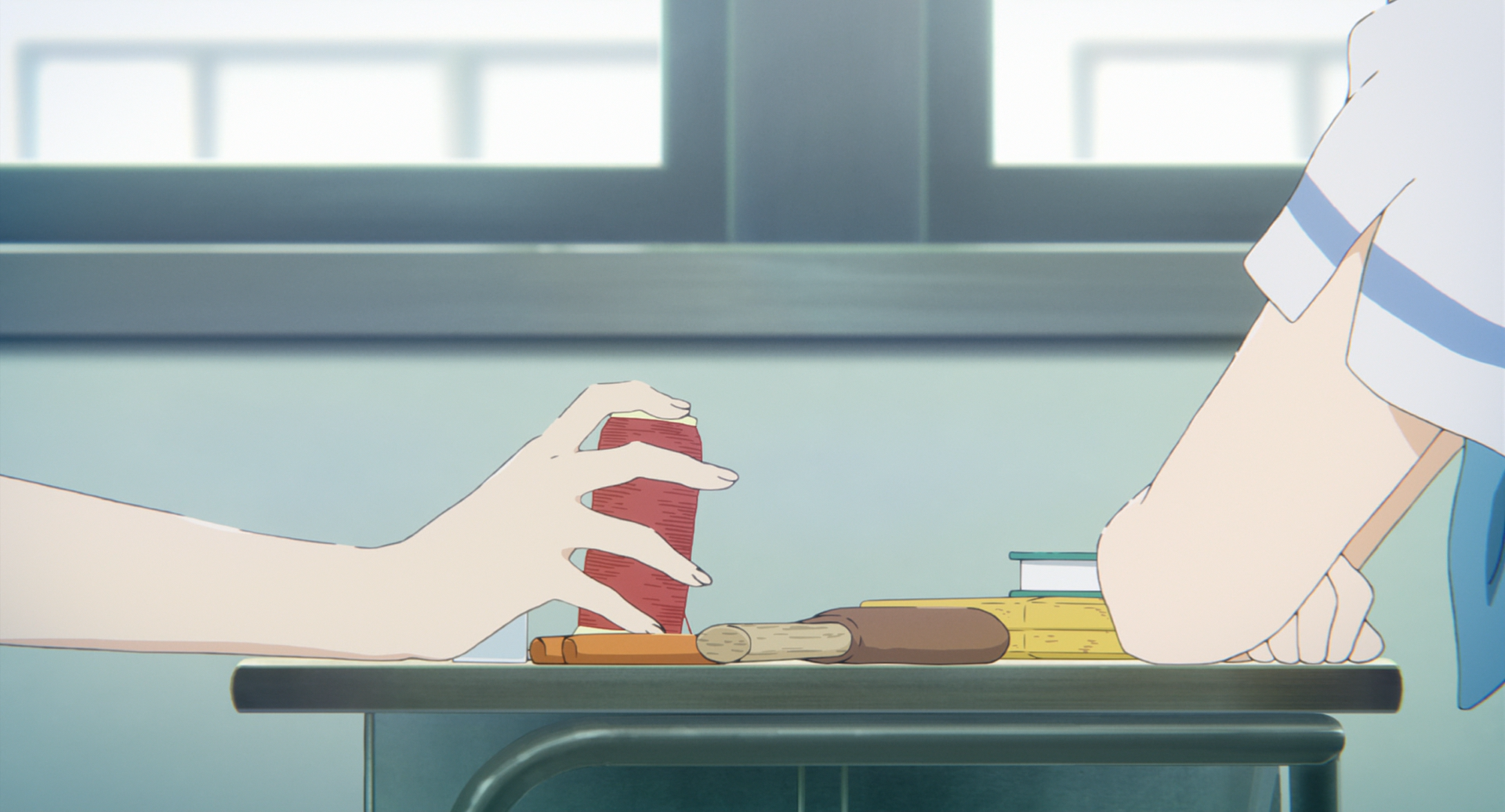 | 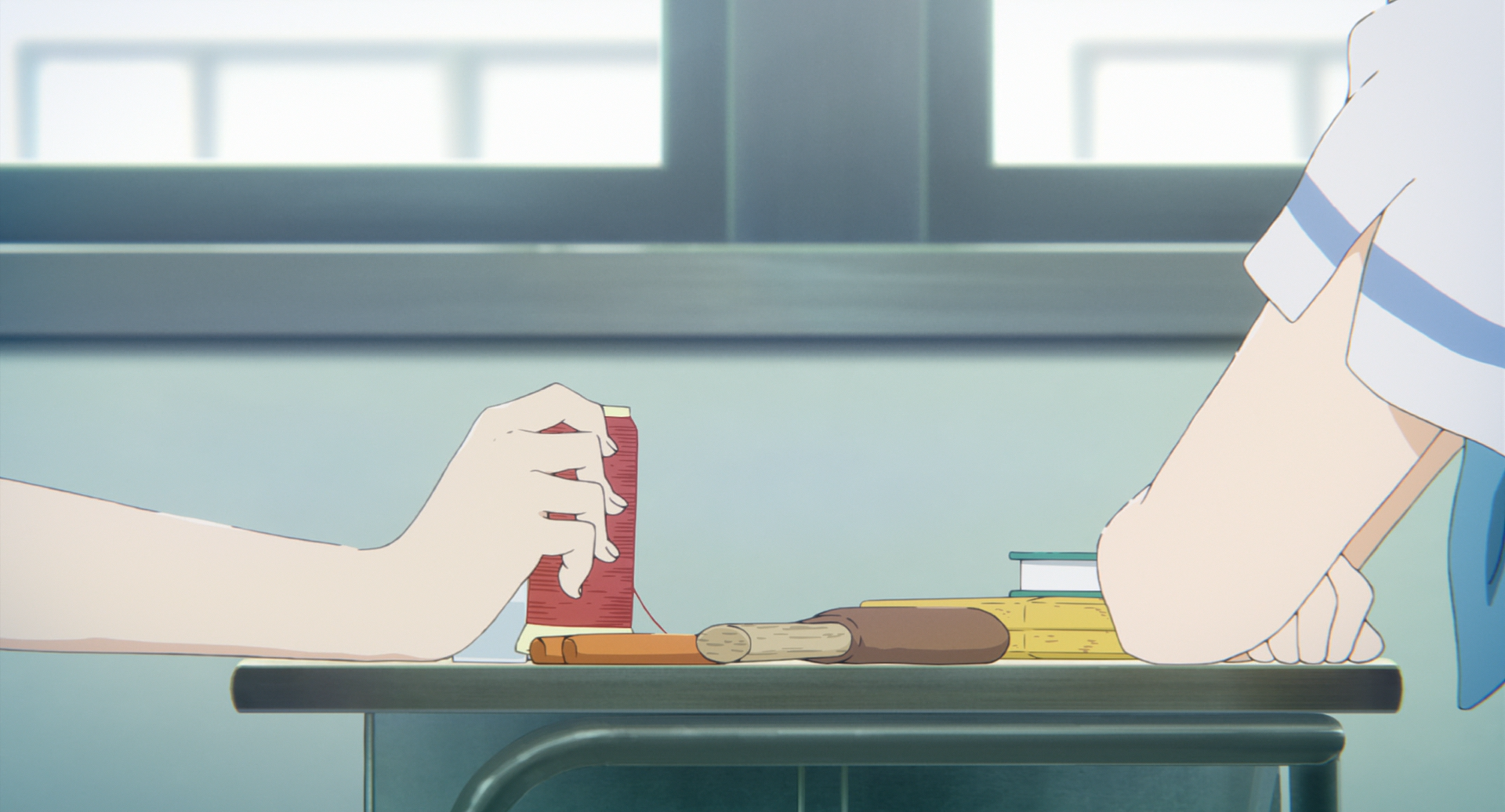 |
And again, when Reina confronts her about her holding back on her solo:
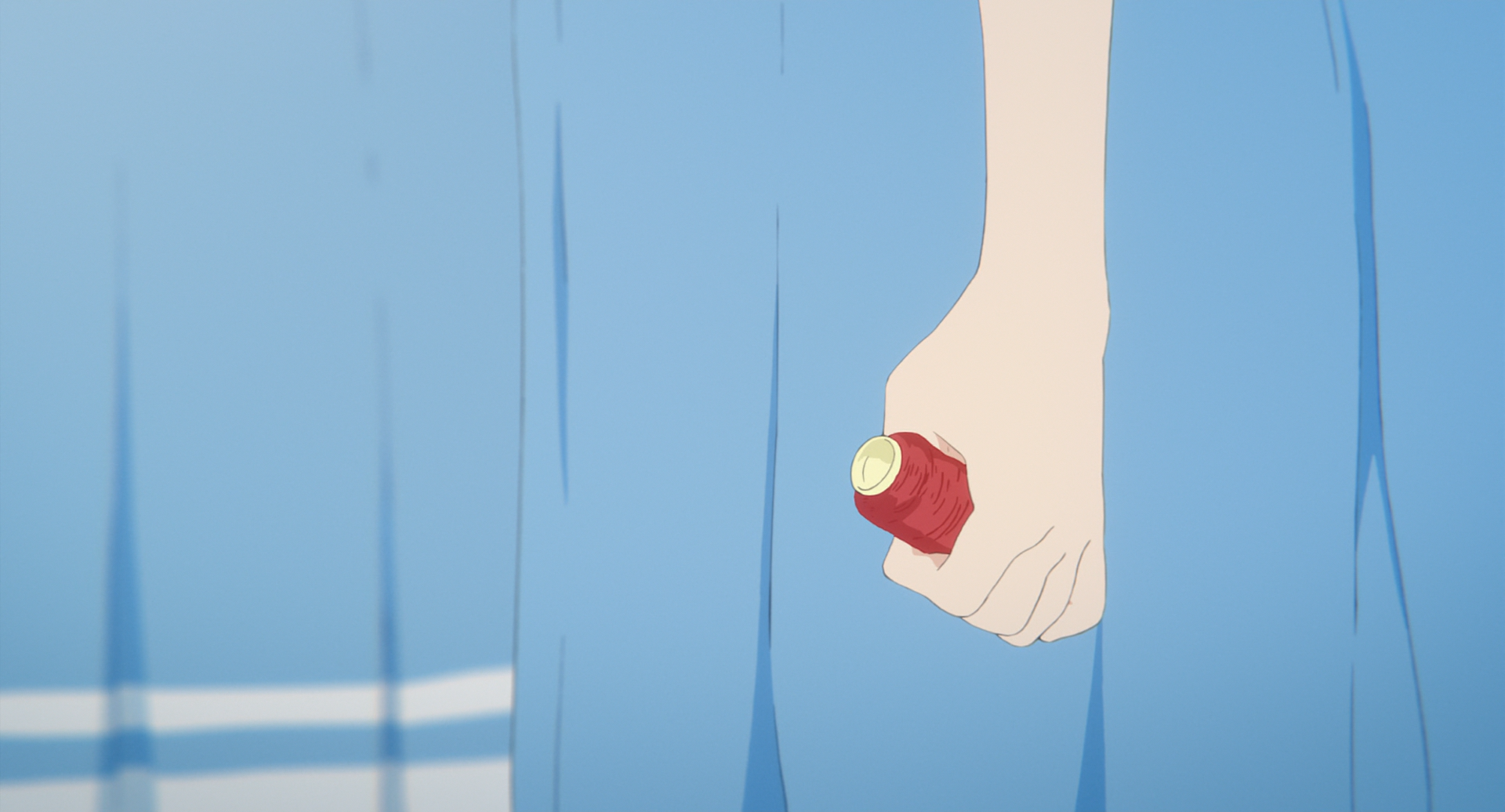
I believe the string is meant to be analogous to the red berries in the story of Liz:
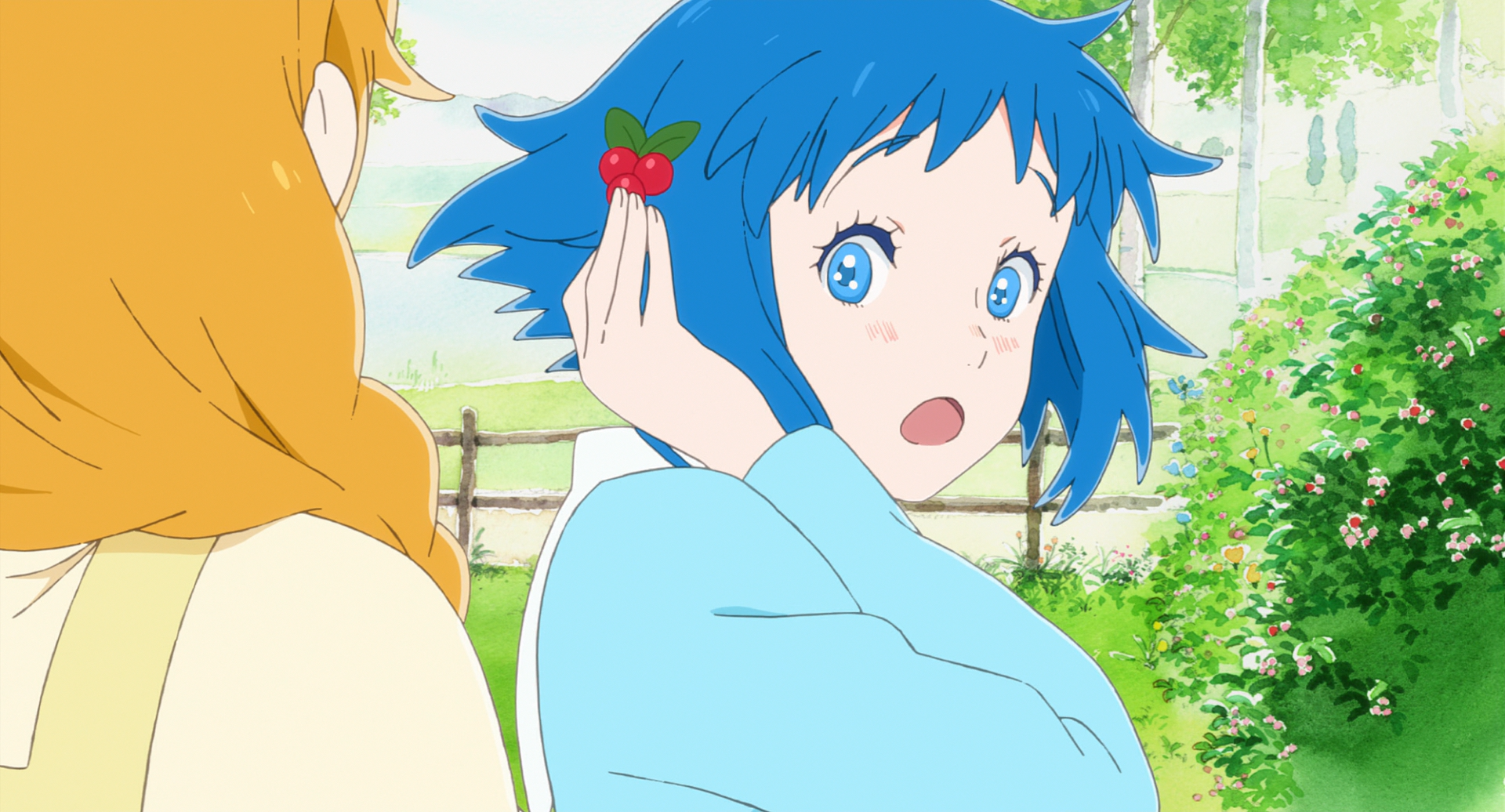
Just as Liz in the fairy tale gave the bluebird the berries to eat (probably symbolic of love, often represented by red), it was essentially Nozomi who gave Mizore the chance to play oboe, hence the use of the red strings make sense here.
By the way, did you also notice the addition of Nozomi’s red wristwatch?

At first I thought this was just to keep in line with her character design from the TV anime, but it eventually caught my eye because it was being explicitly focused on a bit too much for just being labelled as a simple character design device. This is likely to hint at the role reversal which occurs as the movie progresses. Nozomi starts off being the blue bird, trapped into a life of band at the club by Mizore (she already quit once before), but later, we see allusions that Mizore is the bird as well. Her music talent is her wings, and she is being caged by longing to stay together with Nozomi (which leads her doing things like holding back on her solo for Nozomi’s sake).
Blowfish
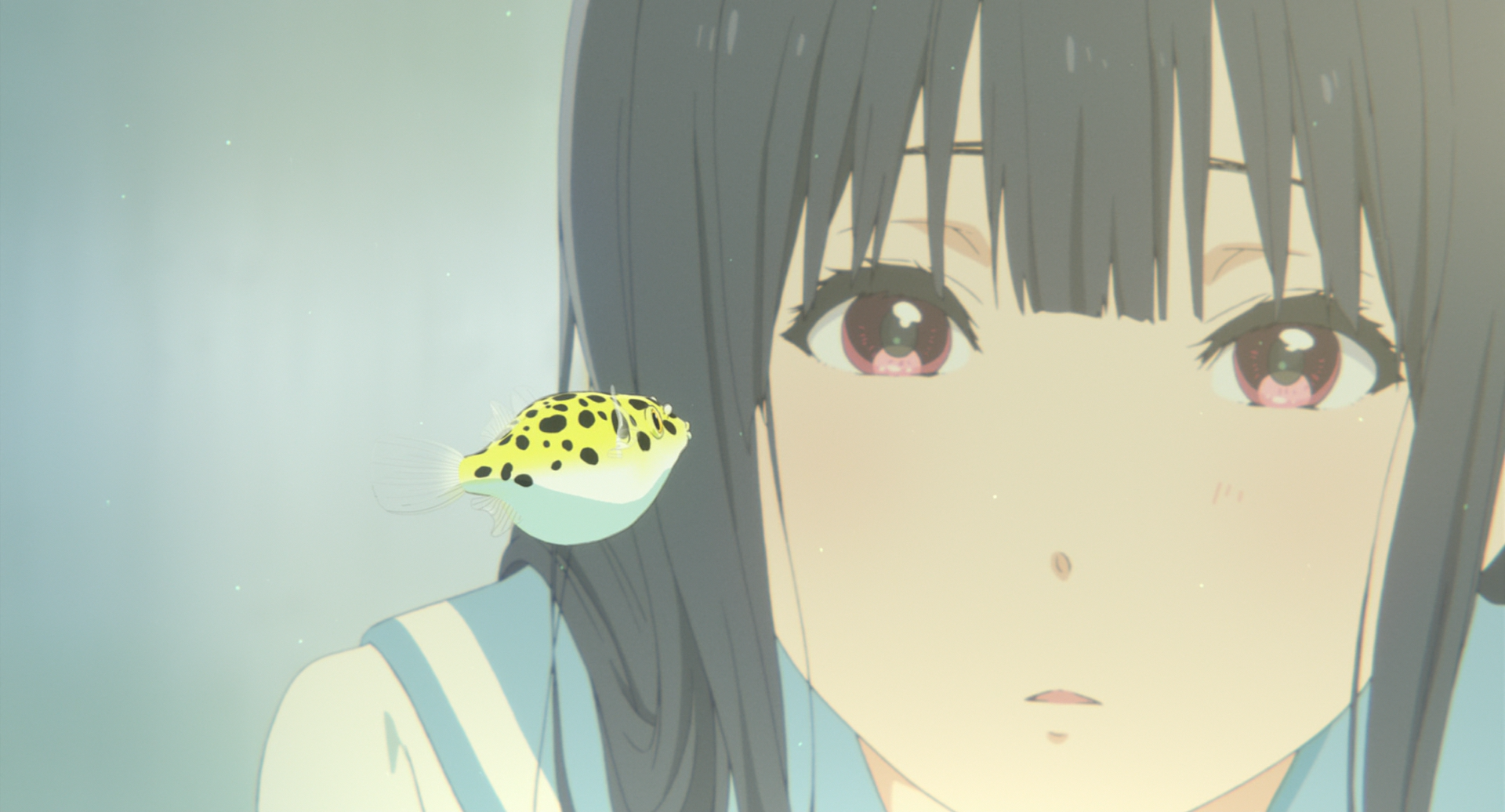
Disregarding why a school would allow keeping one of the most poisonous vertebrate species as pets, the blowfish are a fairly obvious symbol in the movie. The first interpretation that comes to mind is that Nozomi is the blowfish, kind to Mizore at first convincing her to join the band, but then abandoning her by quitting later. A cute fish but lethally poisonous in disguise. This does makes sense and I see no problems with analyzing it this way.
However, based on looking at a couple scenes of the movie, I very much believe Yamada was trying to portray the opposite as well. Nozomi is jealous of Mizore’s oboe skill, evident in parts like eg: Her trying to get the attention of the teachers.
If you think about their past, this makes sense. Nozomi always believed she had to upper hand, she is the one who first approached Mizore and told her to get involved in band in the first place. It would be natural for Nozomi to feel jealous when Mizore gets good at oboe, receives heavy praise from everyone, makes other friends, etc. The only reason she rejoined the band was because she was enigmatical and probably jealous at how well the band was doing, and how well Mizore was doing without her. I would even go as far to say that the entire reason she left the band in the first place had some motivation along the lines of: Putting Mizore to the test, seeing how she feels all lonely without Nozomi, and coming crying back to her later. Of course, this isn’t what happened.
It’s a case of “you reap what you sow” I guess. Indeed, the fish she raised at first for its cuteness seemed to have poisoned her later.
Cage
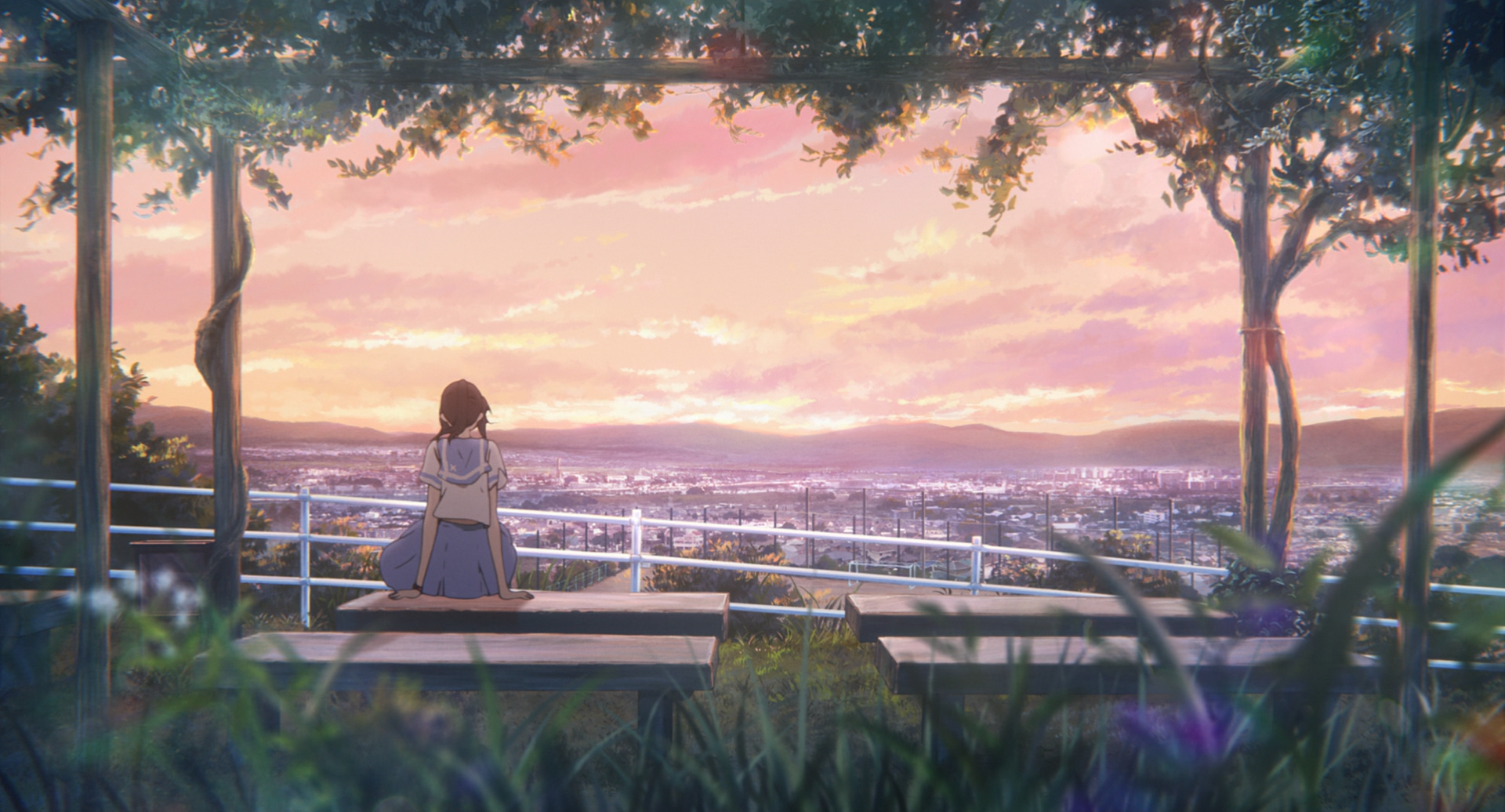
The surrounding trees in the above shot outline a cage, which Nozomi is depicted as trapped in. She is sitting looking out at the open sky, representative of her longing for freedom by alluding to the blue bird extended imagery. The heavy use of saturation and greenery is very uncharacteristic compared to where most of the film is set in. This is likely to allude to the vibrant garden from the fairy tale.
Incidentally, I didn’t notice this before, but the location here is similar (though it doesn’t look to be the exact same) to the one which Reina and Kumiko climbed to on the night of the festival during the TV anime. (This location ring a bell?)
Technically this isn’t very realistic, as Mizore’s stride would need to huge to match Nozomi’s pace if she is walking almost half as many steps, but the shots were structured such that distance of the walk is concealed. ↩︎